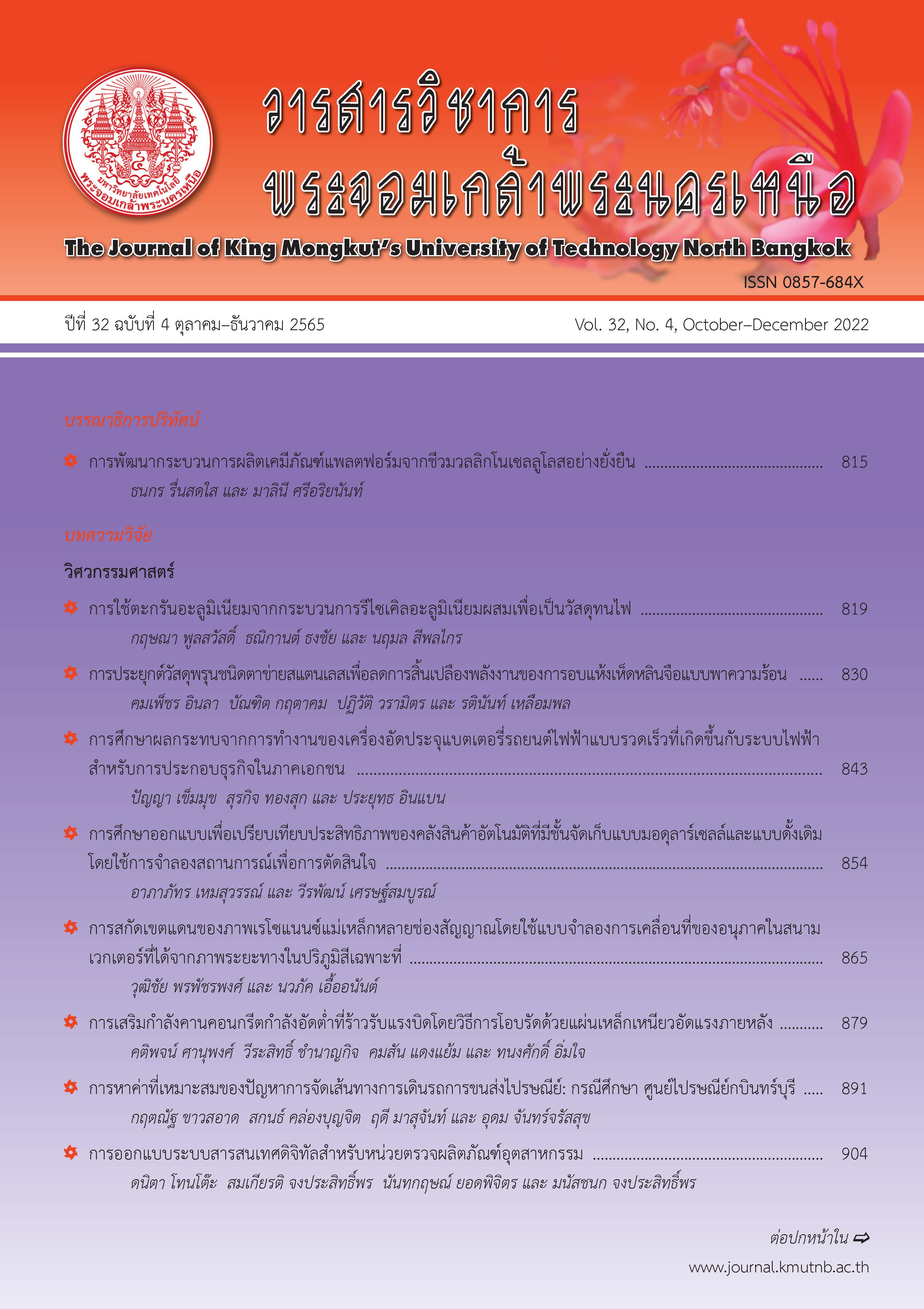การพยากรณ์ยอดขายสินค้าประเภทเครื่องสำอางที่เหมาะสมสำหรับผู้ผลิตในแถบอาเซียน
Main Article Content
บทคัดย่อ
การวิจัยในครั้งนี้มีวัตถุประสงค์เพื่อศึกษาตัวแบบการพยากรณ์ยอดขายผลิตภัณฑ์ใหม่ประเภทเครื่องสำอางที่เหมาะสมจำนวน 3 แบรนด์โดยอาศัยข้อมูลแบบอนุกรมเวลาของยอดขายในอดีตจำนวน 12 ช่วงเวลา มาหาตัวแบบในการพยากรณ์ยอดขายล่วงหน้า 24 เดือน วิเคราะห์ข้อมูลโดยอาศัยเทคนิคการพยากรณ์ด้วยวิธีการวินเตอร์ วิธีการแยกองค์ประกอบ และวิธีการวิเคราะห์แนวโน้มเส้นตรง ซึ่งวัดความคลาดเคลื่อนของการพยากรณ์โดยพิจารณาค่าความผิดพลาดสัมบูรณ์เฉลี่ย (MAD) ค่ากลางของความคลาดเคลื่อนกำลังสอง (MSE) และค่ากลางของเปอร์เซ็นต์ความคลาดเคลื่อนสัมบูรณ์ (MAPE) ที่มีค่าต่ำที่สุด ผลการวิจัยพบว่า วิธีวินเตอร์เป็นตัวแบบการพยากรณ์ยอดขายผลิตภัณฑ์ที่เหมาะสมที่สุดสำหรับแบรนด์ T และแบรนด์ S มีค่า MAPE เท่ากับ 27 และ 35 ตามลำดับ ส่วนวิธีการแยกองค์ประกอบเป็นตัวแบบการพยากรณ์ยอดขายผลิตภัณฑ์ที่เหมาะสมที่สุดสำหรับ แบรนด์ B มีค่า MAPE เท่ากับ 17 ผลการประเมินการนำข้อมูลไปใช้ประโยชน์สำหรับการช่วยเหลือการตัดสินใจของสถานประกอบการในภาพรวมอยู่ในระดับดี มีคะแนนเฉลี่ย 4.16 คะแนน การแก้ไขปัญหาดังกล่าวจึงสามารถใช้เป็นระบบสนับสนุนการตัดสินใจการพยากรณ์ยอดขายสินค้าเพื่อเตรียมความพร้อมให้กับผู้ผลิตทั้งด้านปริมาณการผลิตรวมถึงคุณภาพในการให้บริการ
Article Details

อนุญาตภายใต้เงื่อนไข Creative Commons Attribution-NonCommercial-NoDerivatives 4.0 International License.
บทความที่ลงตีพิมพ์เป็นข้อคิดเห็นของผู้เขียนเท่านั้น
ผู้เขียนจะต้องเป็นผู้รับผิดชอบต่อผลทางกฎหมายใดๆ ที่อาจเกิดขึ้นจากบทความนั้น
เอกสารอ้างอิง
N. Suhaili Ramli, “Immigrant entrepreneurs on the world's successful global brands in the cosmetic industry,” in Procedia of Social and Behavioral Sciences 195, 2015, pp. 113–122.
M. Suvattanadilok, “The effects of consumer behaviors in Bangkok area on purchasing decision of facial whitening moisturizer as a result of marketing mix factors,” Journal of Industrial Education, vol. 17, no. 1, pp. 165–174, 2018.
S. Beheshti-Kashi, R. Karimi, K. Dieter Thoben, M. Lütjen, and M. Teucke, “A survey on retail sales forecasting and prediction in fashion markets,” Systems Science & Control Engineering, vol. 3, no. 1, pp. 154–161, 2015.
F. Tratar, B. Mojškerc, and A. Toman, “Demand forecasting with four-parameter exponential smoothing,” International Journal of Production Economics, vol. 181, pp. 162–173, 2016.
H. Khamooshi and A. Abdi, “Project duration forecasting using earned duration management with exponential smoothing techniques,” Journal of Management in Engineering, vol. 33, no. 1, pp. 1–10, 2017.
J. Batselier and M. Vanhoucke, “Improving project forecast accuracy by integrating earned value management with exponential smoothing and reference class forecasting,” International Journal of Project Management, vol. 35, no. 1, pp. 28–43, 2017.
A. Watlek, “Increase production planning efficiency,” M.S. thesis, Department of Logistics and Supply Chain Management, Faculty of Logistics, Burapha University, 2014 (in Thai).
N. Dechtawisiute, “The productivity improvement of wood furniture with demand forecasting method,” M.S. thesis, Department of Industrial management, Graduate School, Huachiew Chalermprakiet University, 2011.
P. Lalhitaporn, Production Planning and Control System. Bangkok: TPA Publishing, 2006 (in Thai).
N. Veerachalee, “Applying forecast techniques for agrochemicals company”, M.S. thesis, Faculty of Commerce and Accountancy Thammasat University, 2018 (in Thai).
P. Kongsap and N. Kongsap, “Forcasting supply of germinated brown rice a case study of ban-noijomsri enterprise, Sakhon Nakhon Province,” Phranakhon Rajabhat Research Journal (Science and Technology), vol. 12, no. 2, pp. 92–108, 2017 (in Thai).

